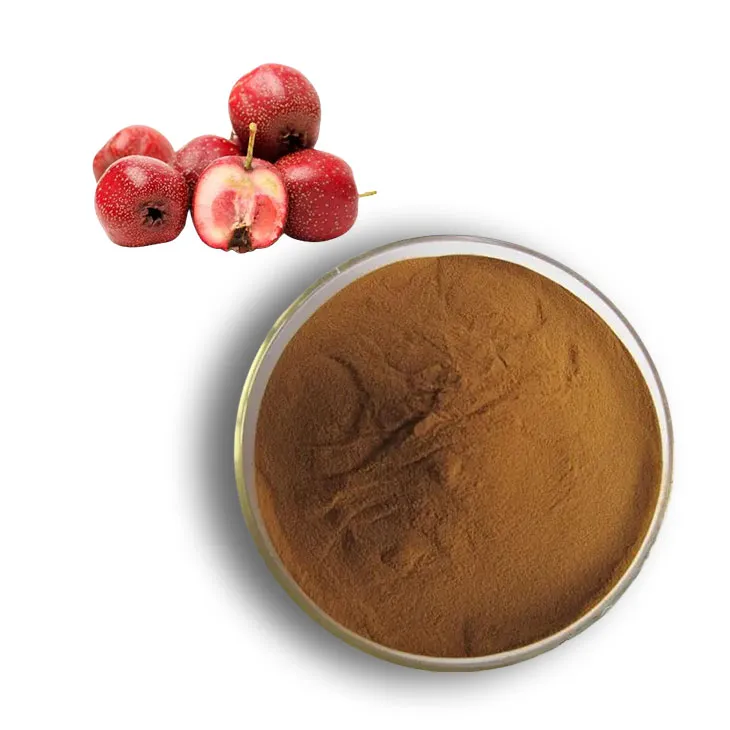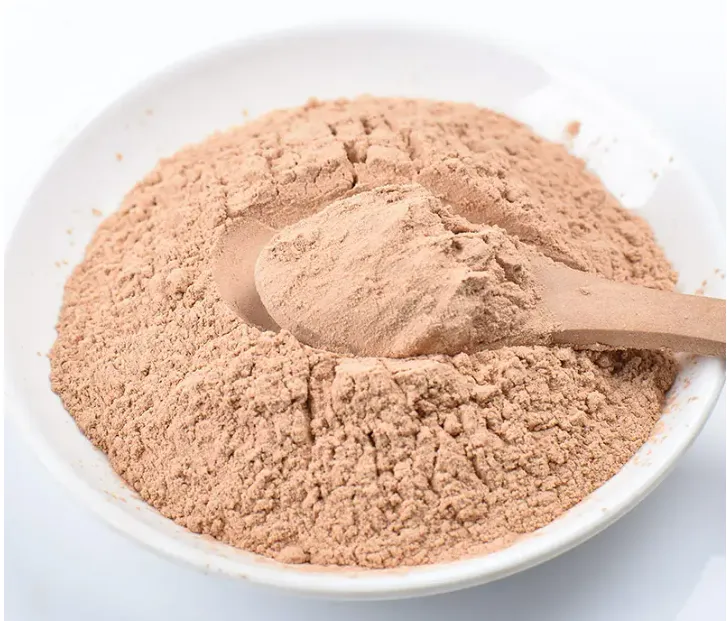- 0086-571-85302990
- sales@greenskybio.com
The extraction process of hawthorn extract.
2024-11-29

1. Introduction
Hawthorn has been widely used in various fields, especially in dietary supplements and traditional medicine. The extraction of Hawthorn Extract is a crucial process to obtain its active substances. This article will delve into the detailed extraction process of Hawthorn Extract, including the steps from raw material collection to the final refined product.

2. Raw Material Collection
The first step in the extraction of Hawthorn Extract is the collection of ripe hawthorn. Ripe hawthorn fruits are preferred as they contain higher levels of active ingredients.
When collecting hawthorn, several factors need to be considered:
- Harvest Time: The right harvest time is essential. It is usually best to harvest hawthorn when it is fully ripe. This is often determined by the color, texture, and taste of the fruits. For example, ripe hawthorn fruits usually turn bright red and have a certain softness.
- Source and Quality: The source of hawthorn also affects the quality of the final extract. Hawthorn from pollution - free areas with good soil and climatic conditions is more likely to produce high - quality extracts.

3. Preparation for Extraction
Once the hawthorn is collected, it needs to be prepared for extraction.
3.1 Cleaning
The collected hawthorn fruits should be thoroughly cleaned to remove dirt, leaves, and other impurities. This can be done by rinsing them with clean water multiple times.
3.2 Drying (Optional)
In some cases, drying the hawthorn before extraction may be necessary. Drying can help reduce the moisture content of the fruits, which may have an impact on the extraction process. However, if the extraction method involves soaking in a solvent immediately, drying may not be required.

4. Grinding
Grinding is an important step in the extraction process. By grinding the hawthorn, the fruits are broken down into smaller particles, which significantly increases the surface area available for extraction.
The grinding process should be carried out carefully to ensure that the particles are of an appropriate size. If the particles are too large, the extraction efficiency may be low as the solvent may not be able to fully penetrate and extract the active substances. On the other hand, if the particles are too fine, it may cause problems such as clogging during the subsequent extraction steps.
5. Extraction Methods
There are several extraction methods that can be used for hawthorn extract, and two common ones are maceration and Soxhlet extraction.
5.1 Maceration
Maceration is a relatively simple and traditional extraction method.
- Solvent Selection: First, a suitable solvent needs to be selected. Commonly used solvents for hawthorn extraction include ethanol, water, or a mixture of the two. The choice of solvent depends on the solubility of the active substances in hawthorn and the intended use of the extract. For example, if the extract is intended for use in dietary supplements, ethanol - water mixtures may be preferred as they can extract a wide range of active ingredients while also meeting safety and regulatory requirements.
- Soaking Process: After selecting the solvent, the ground hawthorn is soaked in the solvent for a period of time. The soaking time can vary depending on factors such as the type of solvent, the particle size of the hawthorn, and the desired extraction efficiency. Generally, it can range from several hours to several days. During this time, the active substances in the hawthorn gradually dissolve into the solvent through diffusion.
- Stirring (Optional): In some cases, stirring the mixture during maceration can help improve the extraction efficiency. Stirring can enhance the contact between the hawthorn particles and the solvent, promoting the transfer of active substances into the solvent.
5.2 Soxhlet Extraction
Soxhlet extraction is a continuous extraction process.
- Apparatus Setup: The Soxhlet apparatus consists of a flask, a condenser, and an extraction chamber. The ground hawthorn is placed in a thimble in the extraction chamber.
- Solvent Circulation: A suitable solvent is added to the flask. The solvent is then heated and vaporized. The vapor rises into the condenser, where it is condensed back into a liquid and drips into the extraction chamber containing the hawthorn. The solvent continuously washes over the hawthorn, extracting the active substances. The solvent then siphons back into the flask, and the cycle repeats.
- Advantages: Soxhlet extraction has the advantage of being a continuous process, which can achieve a relatively high extraction efficiency. It is especially suitable for extracting substances with low solubility in the solvent, as the continuous washing action can gradually extract more of the active substances over time.
6. Separation of Extract
After extraction, the next step is to separate the extract from the remaining solid parts. One common method for this is centrifugation.
Centrifugation works on the principle of using centrifugal force to separate substances of different densities. In the case of hawthorn extract, the extract - solvent mixture and the remaining solid hawthorn particles are placed in a centrifuge tube. When the centrifuge rotates at a high speed, the heavier solid particles are forced to the bottom of the tube, while the lighter extract - solvent mixture remains on top.
Another method for separation could be filtration. Filtration can be used to remove larger solid particles from the extract. However, compared to centrifugation, filtration may not be as effective in separating very fine solid particles from the extract.
7. Refinement of the Extract
The obtained hawthorn extract usually needs to go through a refinement process to improve its quality and purity.
7.1 Decolorization
Decolorization is often necessary as the extract may contain unwanted pigments. There are several methods for decolorization:
- Activated Carbon Treatment: Activated carbon can be added to the extract. The activated carbon has a large surface area and can adsorb pigments and other impurities. After adding the activated carbon, the mixture is stirred for a period of time and then filtered to remove the activated carbon along with the adsorbed pigments.
- Ion - Exchange Resins: Some ion - exchange resins can also be used for decolorization. These resins can selectively adsorb pigments based on their ionic properties.
7.2 Clarification
Clarification is another important step in the refinement process. This is to make the extract more pure and clear.
- Centrifugation (Again): Re - centrifugation can be carried out to further remove any remaining fine solid particles or impurities that may cause turbidity in the extract.
- Filtration with Fine Filters: Using fine - pore filters can also help in clarification. These filters can trap very small particles and impurities, resulting in a clearer extract.
8. Final Product and Applications
After the refinement process, the hawthorn extract is ready for use in different industries.
8.1 Dietary Supplements
Hawthorn extract is a popular ingredient in dietary supplements. It is often used for its potential health benefits, such as promoting heart health, improving digestion, and reducing blood lipid levels. In dietary supplements, the extract is usually formulated with other ingredients to create products in the form of tablets, capsules, or powders.
8.2 Traditional Medicine
In traditional medicine, hawthorn has a long history of use. The extract can be used in the preparation of traditional medicine formulations. For example, it may be combined with other herbs to treat various ailments related to the heart, blood circulation, and digestion.
FAQ:
What is the first step in the extraction process of hawthorn extract?
The first step is the collection of ripe hawthorn.
Why is grinding an important step in extracting hawthorn extract?
Grinding is important because it breaks down the hawthorn into smaller particles. This increases the surface area available for extraction, which helps in more efficient transfer of active substances during the subsequent extraction steps.
What is the purpose of maceration in the extraction of hawthorn extract?
The purpose of maceration is to soak the ground hawthorn in a suitable solvent for a period of time. This allows the active substances in the hawthorn to be transferred into the solvent.
How does Soxhlet extraction work in the context of hawthorn extract?
Soxhlet extraction is a continuous extraction process. It repeatedly cycles the solvent through the ground hawthorn to gradually extract the active substances more thoroughly compared to a single - time maceration.
Why is centrifugation used in the extraction process of hawthorn extract?
Centrifugation is used to separate the extract from the remaining solid parts after extraction. This helps in obtaining a more purified extract by removing the undissolved solids.
Related literature
- Optimization of Hawthorn Extract Production"
- "The Chemical Composition and Extraction Techniques of Hawthorn"
- "Hawthorn Extract: From Raw Material to High - Quality Product"
- ▶ Hesperidin
- ▶ citrus bioflavonoids
- ▶ plant extract
- ▶ lycopene
- ▶ Diosmin
- ▶ Grape seed extract
- ▶ Sea buckthorn Juice Powder
- ▶ Beetroot powder
- ▶ Hops Extract
- ▶ Artichoke Extract
- ▶ Reishi mushroom extract
- ▶ Astaxanthin
- ▶ Green Tea Extract
- ▶ Curcumin Extract
- ▶ Horse Chestnut Extract
- ▶ Other Problems
- ▶ Boswellia Serrata Extract
- ▶ Resveratrol Extract
- ▶ Marigold Extract
- ▶ Grape Leaf Extract
- ▶ blog3
- ▶ blog4
-
The best organic green tea extract.
2024-11-29
-
Ashwagandha extract manufacturer.
2024-11-29
-
High - quality peppermint oil products.
2024-11-29
-
100% Pure Natural L - carnitine.
2024-11-29
-
Motherwort Extract
2024-11-29
-
Acai Berry Extract
2024-11-29
-
Lemon Balm Extract
2024-11-29
-
Bayberry Extract
2024-11-29
-
Chasteberry Extract
2024-11-29
-
Andrographis Paniculata Extract Powder
2024-11-29
-
Boswellia Serrata Extract
2024-11-29
-
Grapefruit Seed Extract Powder
2024-11-29
-
Maitake Mushroom Extract
2024-11-29
-
Sophora Flavescens Root Extract
2024-11-29





















